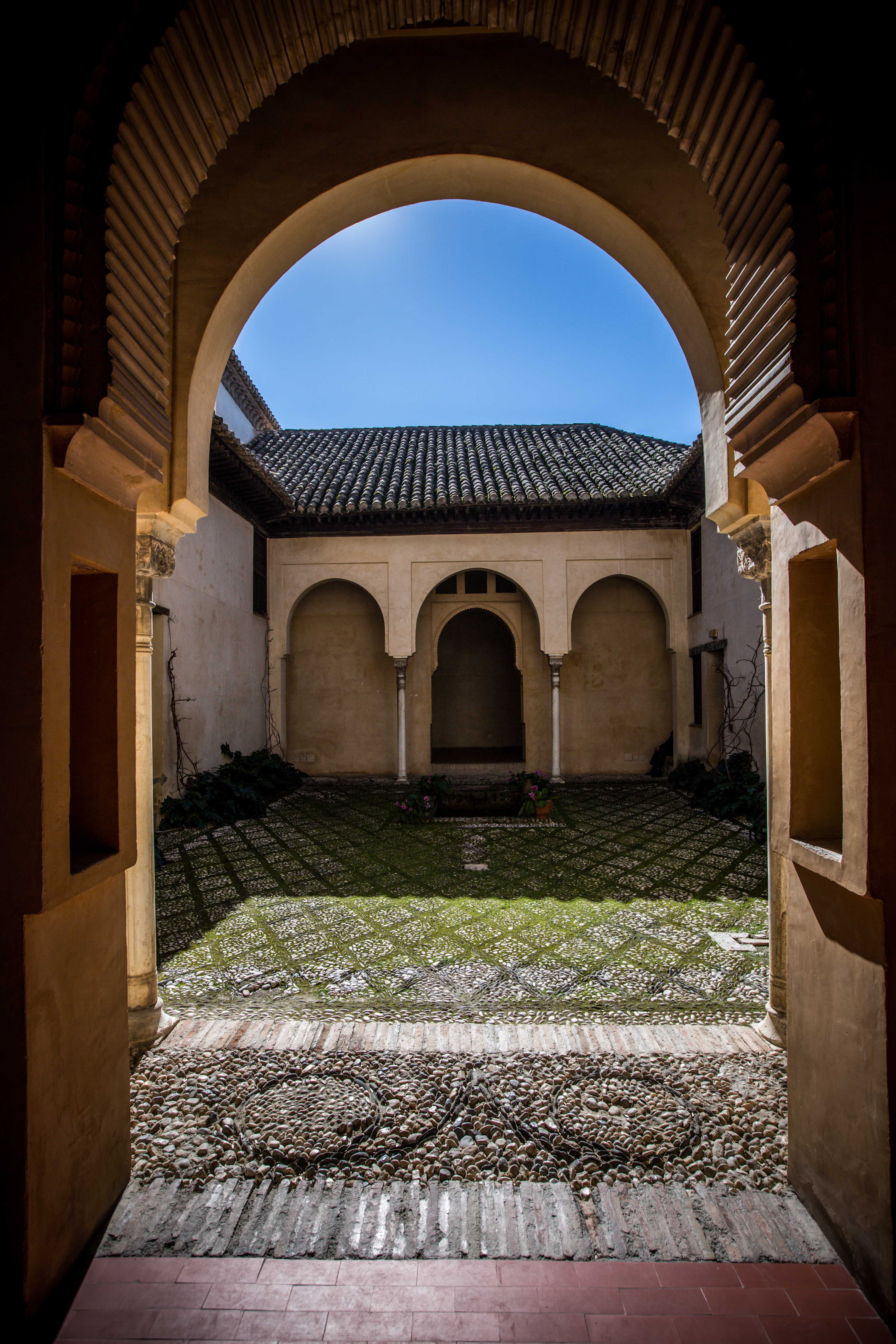The Alhambra and the Albayzín are now much closer together thanks to the Dobla de Oro (Golden Doubloon) project, which is one year old. They are joined by the Dobla de Oro, an organized cultural tourism route which seeks to strengthen links between the city’s oldest neighbourhood and the Alhambra group of monuments, both declared World Heritage sites by UNESCO.
The Dobla de Oro invites visitors to immerse themselves in a cultural landscape in which they will discover the great Hispano-Muslim monuments of Granada, while strolling through lively districts that are touched by the magic of history, aesthetics and flamenco.
There are various forms of visit: combined Alhambra –Hispano-Muslim monuments or just Hispano-Muslim monuments. Those interested can either opt for the Dobla de Oro General, which combines the General Visit to the Alhambra (Nasrid Palaces, Generalife, Partal and Alcazaba) with a visit to the Dobla de Oro monuments: the Bañuelo Arabic Baths, the Horno de Oro Moorish House, the Dar al-Horra Palace, the Casa del Chapíz, the Casa de Zafra and the Corral del Carbón (admission is free to this last monument); Dobla de Oro Jardines, which combines a visit to the gardens of the Alhambra with a visit to the Hispano-Muslim monuments or Dobla de Oro Nocturna, a night-time visit to the Nasrid Palaces and the Hispano-Muslim monuments.
A STROLL AROUND SIX MONUMENTS
For those travellers who would like to visit the Dobla de Oro monuments in Granada and the Albayzín without buying the admission ticket to the Alhambra, admission to all the Dobla de Oro monuments is free on Saturdays until full capacity is reached. Those choosing the Dobla de Oro will enjoy a stroll from the Alhambra to the Albayzín through six Hispano-Muslim monuments in the Albayzín and Christian Granada.
The Dar al-Horra Palace was constructed in the heart of the Albayzín as a residence for the Sultana Aixa, the mother of Boabdil, the last Nasrid King of Granada.
The Corral del Carbón, an ancient grain store and an inn for merchants, is just off the Calle Reyes Católicos, where the Christians expanded the city towards the west.
The Bañuelo Arabic bath, which is in the Albayzín is the oldest and best conserved public bath in Spain. The Casa de Zafra is in the Lower Albayzín near the Maristán Hospital and the Convent of la Concepción. The Horno de Oro Moorish House, which is near the Carrera del Darro and the Paseo de los Tristes. The Casa del Chapiz lies between the Albayzín and Sacromonte and is currently the home of the School of Arabic Studies.





 Contact
Contact
















